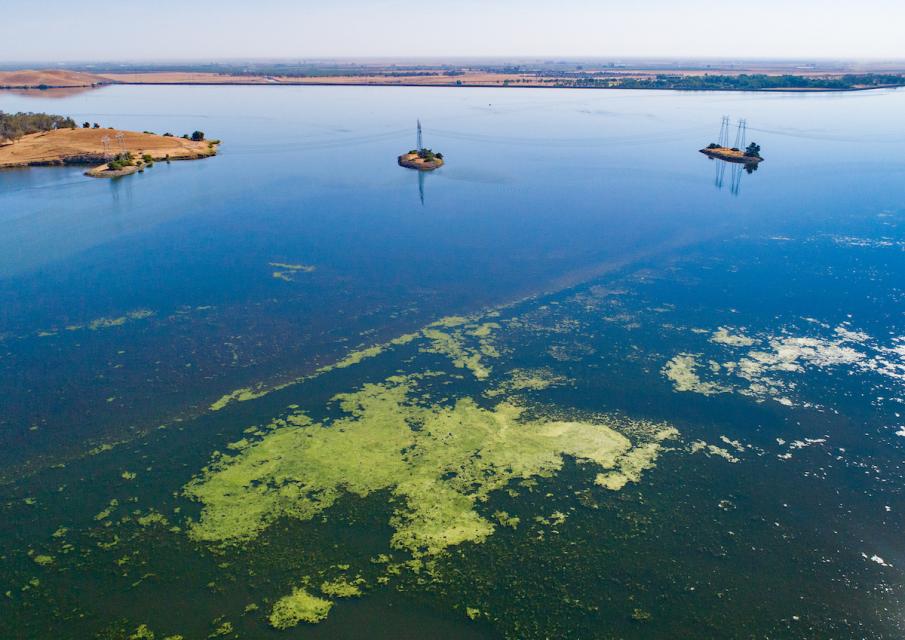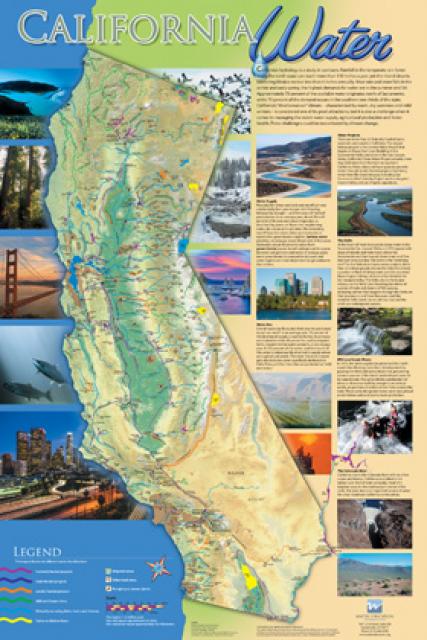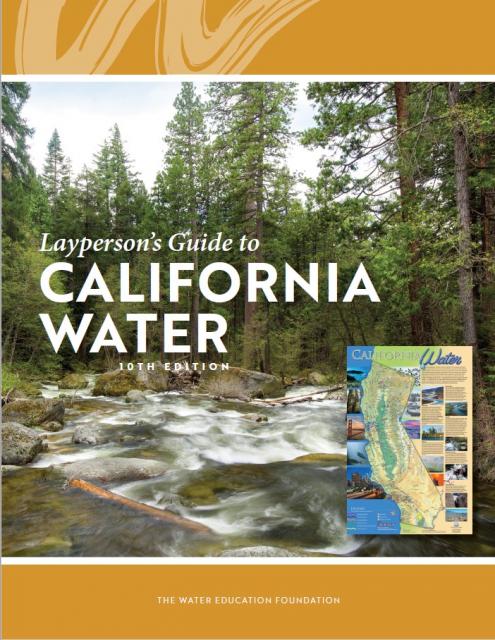Algal Blooms
Algal blooms are sudden outbreaks of algae. Their occurrence is increasing in California’s rivers, creeks and lakes and along the coast, threatening the lives of people, pets and fisheries.
Only a few types of algae can produce poisons, but even nontoxic blooms hurt the environment and local economies. When masses of algae die and decay, they can deplete oxygen in the water to the point of causing devastating fish kills.
The blooms typically occur in the summer when hot temperatures and plentiful sunlight coincide with low water levels and excessive nutrients, particularly phosphorous and nitrogen, often caused by stormwater runoff of fertilizers, sewage and manure from the land.
Harmful impacts
Blue-green algae known as cyanobacteria cause most freshwater blooms of public health concern, according to the federal Centers for Disease Control and Prevention (CDC).
Exposure to cyanobacteria can cause eye irritation, allergic skin rash, mouth ulcers, vomiting, diarrhea and cold- and flu-like symptoms. Young children are most likely to be affected because of their small body size and tendency to play longer in the water.
Dogs also are vulnerable and can die from exposure because they tend to drink while in the water and lick their fur afterward. Even livestock and other animals can get sick or die, sometimes within minutes, from swallowing toxins from cyanobacterial blooms.
Some marine algae produce dangerous levels of domoic acid. While commercial seafood is generally regulated for safe consumption, recreationally caught fish and crustaceans are unregulated and could carry dangerous levels of the neurotoxin.
Grow in fresh and salt water
Organisms that photosynthesize but lack the formal water circulation structure of land plants are placed in the broad category of “algae.” These can grow in fresh water or salt water as single cells, often in colonies, or multicellular organisms such as giant kelp.
Algae are so prolific that their photosynthesis produces approximately half of the planet’s oxygen, making them essential to our survival. Old algae deposits also make up a portion of petroleum products and living or recently dead algae serve as food and shelter for innumerable species
Bloom colors not reliable sign of toxicity
You can’t tell whether a bloom is harmful just by looking at it. Even when you can’t see a bloom, the toxins can still be in the water, the CDC says.
Despite their name, blue-green algae are not restricted to blue-green colors and can appear green, yellowish-brown or red.
Nontoxic algae are also green, so the colors of blooms are not always reliable indicators of toxicity. Harmful blooms in salt water are often referred to as “red tides,” because their density can cause the color of the water to turn red, as well as green or brown.
Harmful algal blooms in fresh water are more difficult to detect than colorful red tides on coastlines but have characteristic patterns that can be recognized from the surface. Grouping in parallel streaks or clumped dots usually indicates toxicity, as does the semblance of spilled green paint or thick pea soup. Alternatively, nontoxic algae generally appear as floating rafts, scum or tangled hair.
State response
California has a Harmful Algal Bloom Monitoring and Alert Program to mitigate, predict and prevent harmful algal blooms. It also provides updates on current algal blooms. The state Department of Fish and Wildlife posts health advisories and fishing restrictions to protect the public from harmful algae.
State health officials advise swimmers and pets exposed water with blooms to rinse immediately with tap water. People should not drink, cook or wash dishes with untreated surface water from these areas. Common water purification techniques such as camping filters, tablets and boiling do not remove toxins.
Updated July 2025











